It was the best of times, it was the worst of times. Yep, 2018 was a wild year for the Long Beach food scene, with major restaurant openings from locally bred chefs and unexpected restaurant closures that were equally as major losses.
We said goodbye to legends like Big Mista’s, experiments like Seoulmate and too-soon concepts like 4th and Olive. But we also gained (at a rapid rate) new experiments, more possibly too-soon concepts and hopefully a few future legends—all part of the inevitable roller coaster when a city with rising regional stock is grappling with an evolving culinary identity.
Long Beach gained at least one new place to eat or drink each week this year, a trend that affected nearly every neighborhood and lasted straight into the holiday season. Eating at all of them, we found that the best new additions all had one thing in common: whether started by local natives or obsessed transplants, they focused on community.
Remember 10 years ago when Downtown was a trawl of pinkie-out Italian restaurants, lost corporate chains (Hooters on Pine!) and nightclubs that only served food because their license required it? We’ve come a long way—and without losing our roots. The ups and downs aren’t over yet, but its that time of year, so just enjoy the ride. These are the best new restaurants of 2018.
–Brian Addison and Sarah Bennett
****

The 4th Horseman
121 W. Fourth St., Downtown; 562-513-3394
The 4th Horseman is quickly becoming a staple in Downtown Long Beach—and it’s only been open for about a month.
Here, your eyes will feast on the artistic gems of horror-core fans. Tables are adorned with cut-outs of old horror and sci-fi comics like Eerie and Famous Monsters. Shrunken heads of the four owners line the pathway to the restroom. Vintage NYC Monsters Convention posters and creepy analog televisions showing nothing but static are paired with paintings of Poe’s raven clinging to a piece of pizza while constant streams of horror flicks play on a small projection screen near the bar.
But the true stars of the Horseman are its pizzas. The creation of chef Adam Schmaltz, these pies are not Neapolitan-style nor New York-style. Rather, they’re odes to the Californian culture of fusion; a chewy, not-too-thick-not-too-thin crust that comes with an abundance of options.
Schmaltz likes to say that anything that can be a sandwich can be a pizza and so, along with pizza classics, you’ll find unique creations such as “Pastrami Dearest,” a creamy ode to the almighty Reuben sandwich: Chunks (not slices) of peppery pastrami and sauerkraut bits thrown onto a mix of Swiss and mozzarella cheeses and drizzled with 1000 Island dressing. Gooey, rich, and surprisingly balanced.
—Brian Addison
****
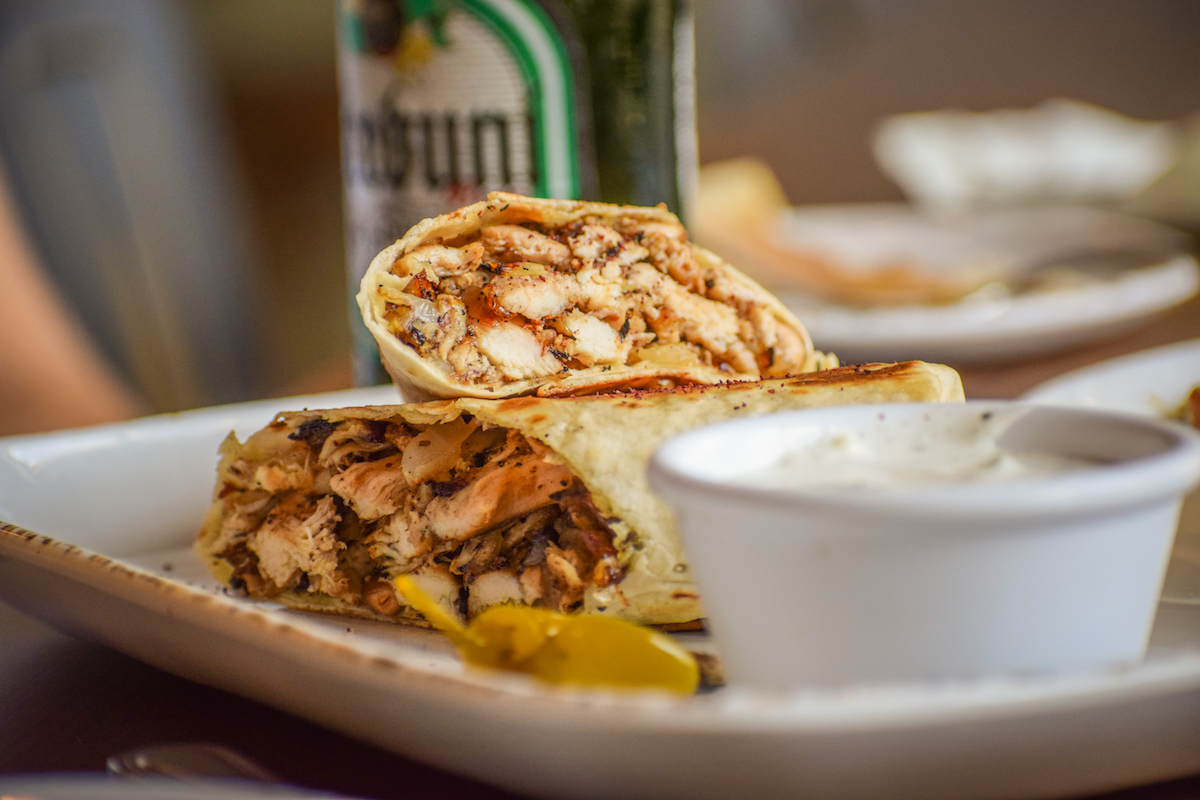
Ammatoli
285 E. Third St., Downtown; 562-435-0808; ammatoli.com
The Levant is a region rich in food culture, encompassing Israel, Cyprus, Jordan and, particularly important for this discussion, Lebanon and Palestine.
Ammatoli highlights Levantine cuisine in a way that is not only accessible—you’ll find a divinely spicy hummus along with other staples like baba ghannouj and tabbouleh—but entices patrons to dive deeper into the restaurant’s ambitious menu.
Owners and chefs Dima and Sam Habibeh have mustered—in a half-year, no less—the strongest sense of the cuisine in their cozy Downtown spot. They throw down plates of perfectly crafted ground beef kafta, a meat skewer that rolls with hints of clove, coriander, onion, and all-around addictiveness. They bring in bowls of foul, beautifully pale fava beans mixed with garbanzo beans and mashed with garlic, lemon juice, tahini and a heavy pour of olive oil.
On weekends, you’ll find the city’s best shakshuka, a labor-intensive, brightly red tomato dish with poached eggs as its’ star. Warmly enveloping, wonderfully layered, it is a dish that is worth visiting every weekend.
Ammatoli is not just one of the best new restaurants, it’s one of Long Beach’s best restaurants, period.
—Brian Addison
****
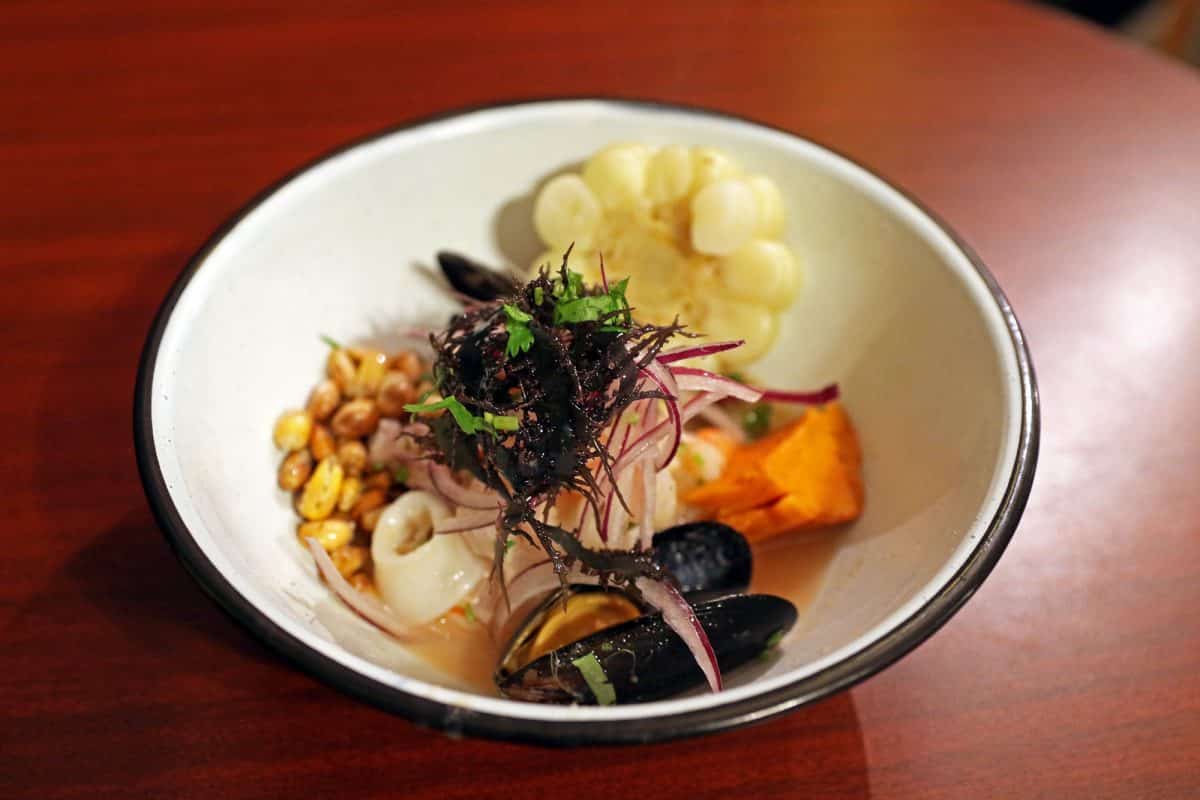
Casa de Chaskis
2380 Santa Fe Ave., Westside; 562-612-3305, instagram.com/casachaskis
The adobe-walled compound on the corner of Santa Fe and Lincoln feels like the kind of intimate place where chef Agustin Romo should have always been serving his food.
For the last year and a half, Romo sold his take on Peruvian classics (think: lomo saltado, tallarin verde and yuca a la huancaina) exclusively through Instagram under the name Chaski’s Peruvian Seasonings. He’d post mouthwatering photos of his home experiments and you’d message, text or comment with your address, order and preferred delivery time. Romo often did deliveries himself, sometimes wearing the same hairnet and apron he cooked in.
Now, he has a restaurant in his hometown, Casa de Chaskis, with a patio that will slay come summer and a dining room so low slung it feels like it could be inside his house. The menu (to start) reads like a greatest hits from his Instagram days.
Every meal starts with puffy bread and a side of a spicy green salsa, a challenger to Lola’s “green crack,” which cuts its own aji heat with iceberg lettuce, garlic and the Peruvian herb huacatey. It’s also best to order the ceviche mixto (four kinds of seafood, two kinds of corn and sweet potato in a leche de tigre that is downright slurpable). Most meals end with a visit from Romo (aka Chaski) himself, who emerges from the kitchen, still wearing a hairnet and apron.
—Sarah Bennett
****

Chinitos Tacos
11130 Del Amo Blvd., Lakewood; 562-403-0343; chinitostacos.com
Beeline Krouch got his start in kitchens by helping his mother and aunties prepare pungent Cambodian dishes on holidays, but it was during the seven years he spent as executive chef of Ortega 120 in Redondo Beach that the Long Beach native truly learned to play with his food.
Working under chef Thomas Ortega—the self-described “pocho” behind Playa Amor and the forthcoming Amorcito in Long Beach—Krouch was shown how to use tradition while respectfully disagreeing with it. And he brings this playful perspective to fast-casual Chinitos Tacos, his first solo restaurant since leaving Ortega’s side in 2013.
In a quiet strip mall on Del Amo Boulevard, just across the Lakewood border, Mexican meats and Southeast Asian herbs and spices spin in a cross-cultural helix that reflects as much Krouch’s elevated-Mexican training as it does his Long Beach upbringing. Affordable tacos, burritos and bowls are anchored by meats like carne asada marinated in ponzu with garlic, barbacoa slow-braised in Chinese five-spice or grilled chicken teeming with lemongrass.
These flavor combinations clap back at the harsh racial lines that formed between Long Beach’s Cambodian and Latino populations as soon as refugees from both regions began moving to Long Beach in the late ‘70s. Krouch (who calls himself the “owner y chef” of Chinitos) instead sees strong similarities between the two cultures, a much-needed worldview that emerges on every plate.
—Sarah Bennett
****

Cuizina
2533 Santa Fe Ave., Westside; 562-980-0022; instagram.com/cuizina
On the surface, Cuizina might just seem like a shinier version of the Westside’s iconic, old-world turo-turo spots, where you “point point” to the meat-rich steam-tray dishes you want on your Styrofoam combo plate before diving into the fatty, sweet, sour and salty world of Filipino food under the watchful glare of a Filipino telenovela.
Yes, they have some traditional meats (pork tocino, adobo, Spam, smoked/dried/fried fish) that you can order silog style (with a fried egg and a side of garlic fried rice) or as a multi-item combo. But Cuizina sets itself apart for its insistence on banana-leaf plating for all dine-in combo orders (including the sizzling pork hash sisig) and an even more comprehensive menu of Filipino ihaw, a genre of street food that consists of various grilled animal parts on short sticks.
For $1.25, you can get a skewer of fried quail eggs, chicken feet, coagulated pork blood cubes or crispy pig ears, which every weekend are grilled streetside at a side-yard pop-up barbecue (follow your nose right around Willow). Pick 18 ihaw pieces for $25 and get rice for three people. Don’t forget the dipping sauces, crucial for their slice of tangy, sweet and sour.
—Sarah Bennett
****
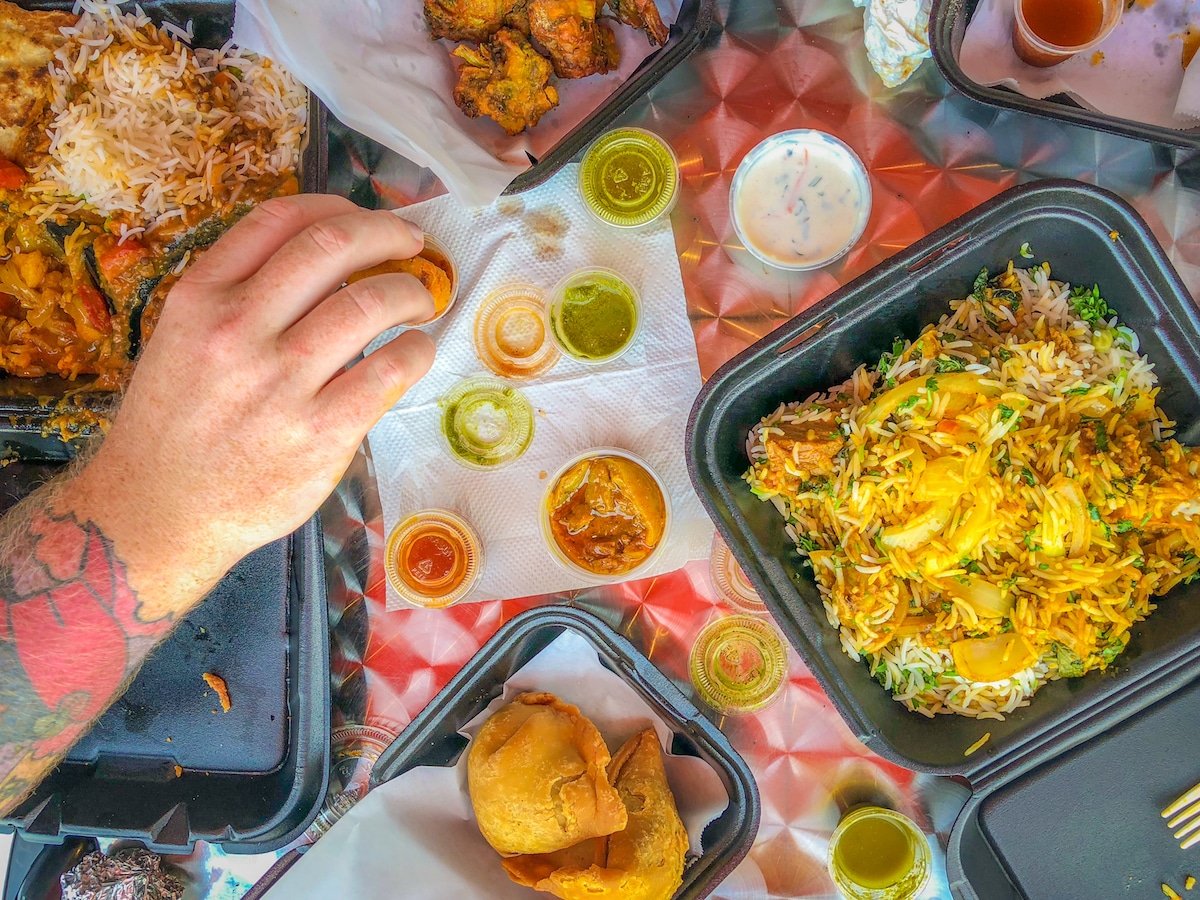
Flamin’ Curry
3344 E. Broadway, Belmont Heights; 562-343-7319, flamincurrylb.com
First, let’s get one thing straight: Long Beach has yet to bring in some stellar Indian cuisine. You’ll have to go to Artesia for the regions best Indian food.
That being said, if there is one thing that should never be maligned, it is quick and cheap food that is also wonderfully satisfying. Unapologetically straightforward, Flamin’ Curry has a line of steam trays offering up a splendid array of Northern and Southern Indian staples that help anyone’s inner cravings for channa masala, biryani and, of course, various curries with various types and levels of spiciness.
Surely, some of the dishes can lean toward the salty but that being said, it is quite possible that the city’s best biryani—the dish that defines the city of Hyderabad in India and is centered on rice and meat—is at Flamin’ Curry.
Take their goat biryani: succulent, bone-barely-clinging chunks of marinated goat sit atop a bed of basmati rice, tinged with the aromatics of lemon, coriander and saffron. It’s nothing short of wondrous.
—Brian Addison
****

Gus’s World Famous Fried Chicken
2580 Long Beach Blvd., Wrigley; 562-276-1819, gusfriedchicken.com
There were officially two places to go to for fried chicken in the region: Howlin’ Rays in Chinatown and Gus’s Fried Chicken in Arlington Heights, both in L.A.
That is, until Gus’—a chain that started in a Mason, Tennessee, roadhouse—finally opened a location in Long Beach.
This tiny but mighty altar dedicated to the almighty cluck worships the style that is Memphis hot chicken. It’s not the same as Nashville hot chicken made famous by Prince’s in Nashville, but it’s also deserving of its own trophy.
Gus’s has the type of chicken that looks overcooked in Instagram photos because of its bleeding red color; a pepper-and-cayenne-y heat that doesn’t immediately hit your tongue but when it does, you feel it, though it never deters you from continuing to plow through, perhaps dipping pieces in your greens or beans to cool it off a bit or grabbing a spear of a fried pickle that gives Beachwood a run for its money.
—Brian Addison
****
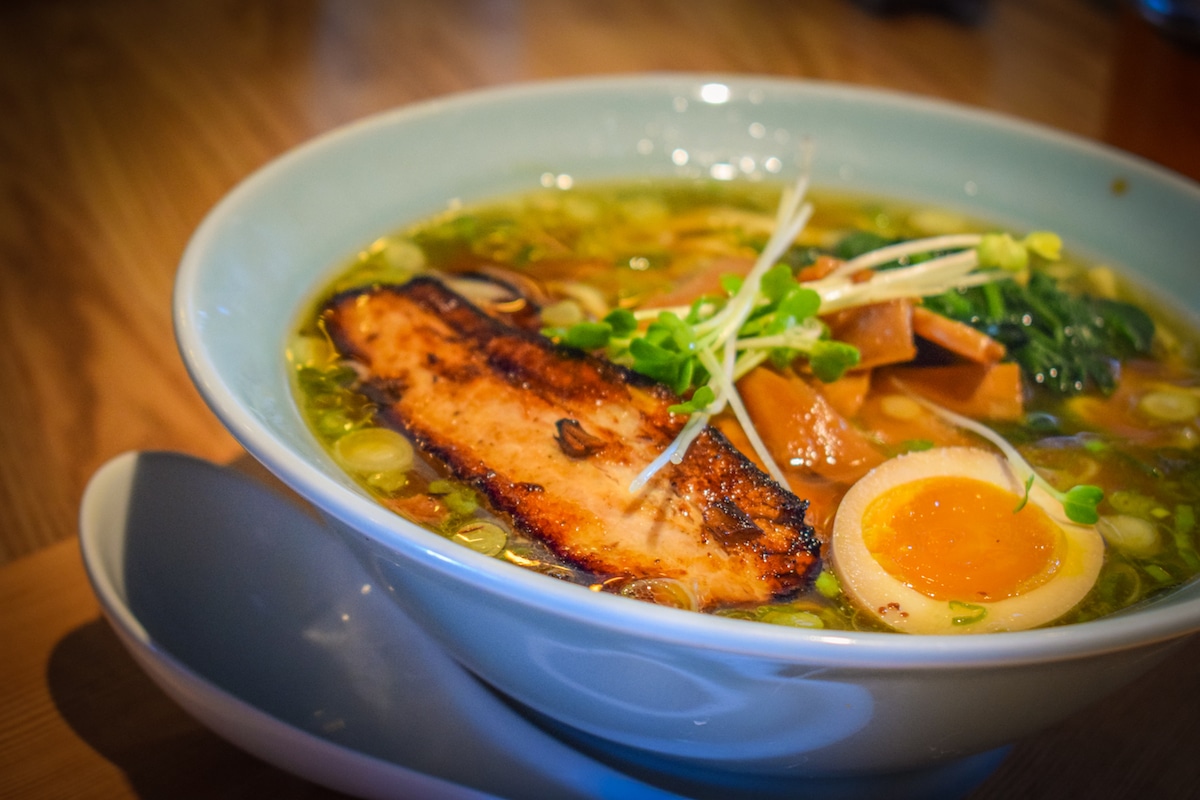
HiroNori Craft Ramen
610 E Carson St., Bixby Knolls; 562-676-4234, hironoricraftramen.com
One spot has finally elevated Long Beach’s ramen scene to the heights that the Japanese staple deserves.
While HiroNori’s vegan ramen and Asahikawa-style ramen—often mistakenly called shoyu ramen because that is the name of its soy-based broth—is astounding, it’s the Hakata-style ramen that is the true star of this tiny-but-mighty ramen shop (and its sister location in Irvine).
Chef Hiromichi Igarashi offers a hefty bowl of creamy tonkotsu Kurobuta pork broth paired with a hearty serving of house-made noodles, your choice of thin or thick. Then there’s green onion, some spinach, seaweed and the star: two hefty pieces of chashu, braised pork that is then wonderfully charred and caramelized so that their small edges of fat are consolidated with the creaminess of the broth.
There is only one downfall here: no beer.
—Brian Addison
****

La Esperanza
1626 Orange Ave., Central; 562-269-0486, laesperanzarestaurant.us
It’s not hard to find good Central American food in Long Beach—unless you’re craving tamales con recado, pepian de pollo or any of the other seed-based, poultry-laden, distinctly Mayan dishes that dominate the cuisine of Guatemala.
Because while the city is home to a dozen or so Honduran and Salvadoran restaurants that serve their country’s traditional sopa de caracol, pupuas and platano-filled platos, it was not until La Esperanza opened on Alamitos Avenue in September that there was finally a sit-down, Guatemalan restaurant in Long Beach.
Owner Adriana Moran opened the first La Esperanza in Torrance in 1994 as a bakery selling pastries and sweet breads from her native Guatemala. She later expanded into a full kitchen serving Guatemalan, Salvadoran and Mexican food.
At the Long Beach La Esperanza, you can still get a hand-spanked pupusa or a wet asada burrito (no bakery on site yet), but it’s the Guatemalan specialties—like banana-leaf-steamed tamales, hot-dog-chorizo sandwiches and enchiladas that are stacked then topped with pickled beets, not rolled, then smothered in sauce—that shine brightest. Explore the menu with confidence; this is the kind of place where the friendly staff is excited to explain and share.
—Sarah Bennett
****
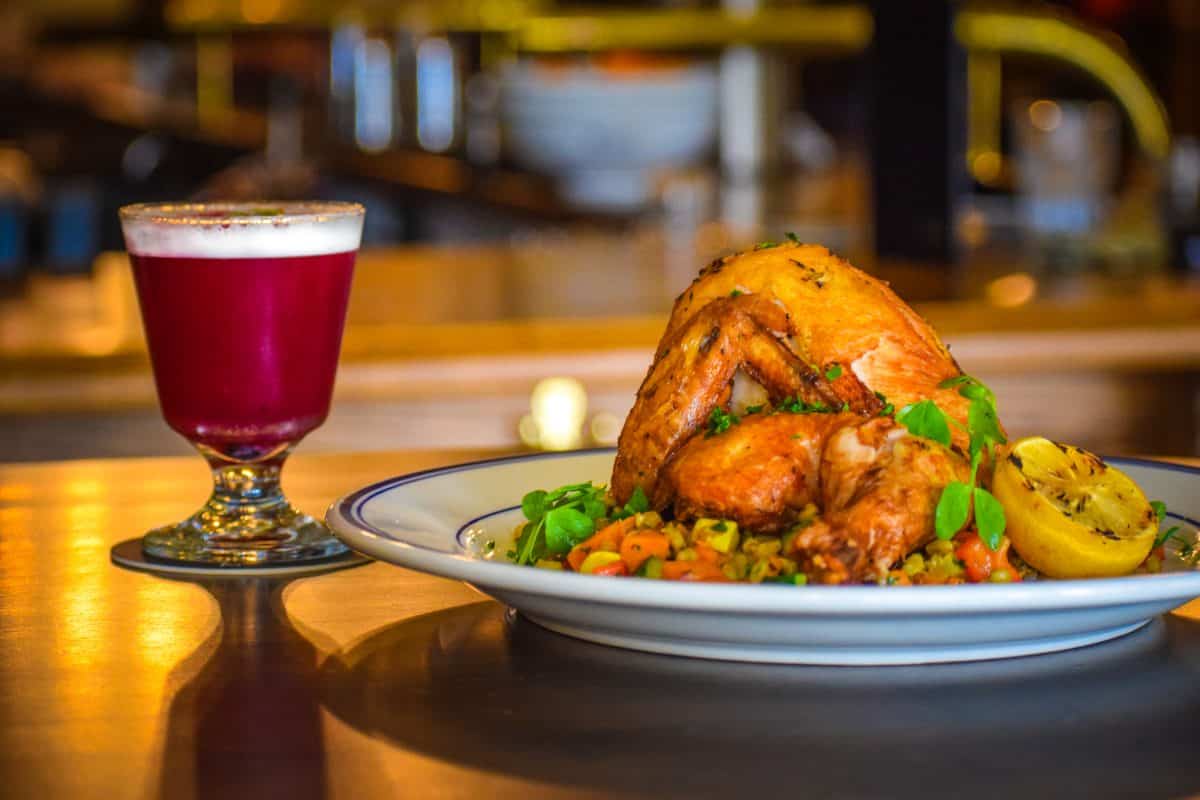
The Ordinarie
210 The Promenade N., Downtown; 562-676-4261
Taking over the old Blue Cafe, The Ordinarie is the brainchild of Auld Dubliner’s longtime bar master, Christy Caldwell and is his ode to American hospitality.
The Ordinarie, or what later became known as the tavern, was written into the laws of the early American colonies: “Every community is required by law to build an Ordinarie for the receiving, refreshment, and entertainment of travelers and strangers.”
In this sense, ordinaries were an integral part of early American culture, a space where people were encouraged to eat, drink and discuss the times and needs of the community.
With that, Caldwell and his crew have created a homey, comfort-driven menu that includes things such as lobster pot pie as well as pot pie bites on the appetizer side that are not to be dismissed. There are wonderfully warming dishes like the one pictured, The Ordinarie’s roasted half-chicken sitting atop a pile of sweet potato succotash.
—Brian Addison
****
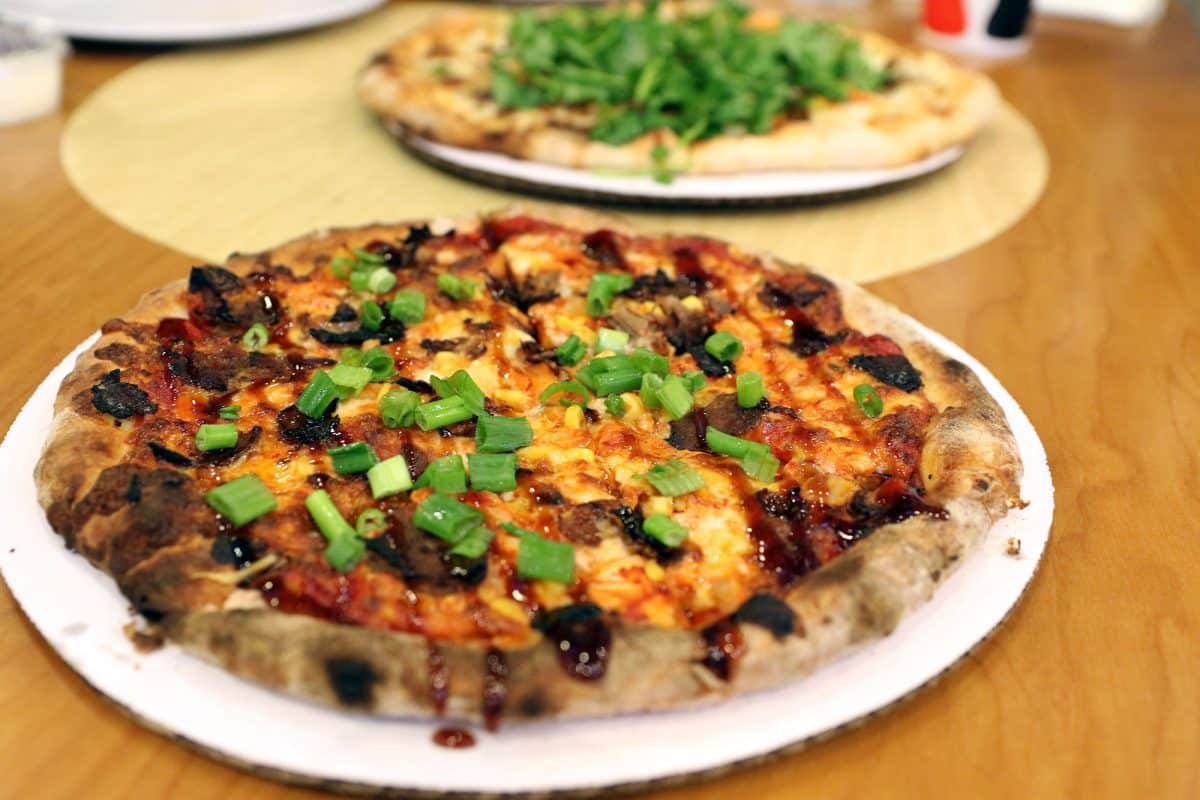
PowWow Pizza
4085 Atlantic Ave., suite B, Bixby Knolls; 562-283-0152
When it comes to restaurant closures, Long Beach took some deep cuts this year. But the loss of Bixby Knolls’ Bella Pizza in late November stung a little less when it was swiftly converted into PowWow Pizza, where the pies are cheap enough for family dinner and the best ones are loaded with unconventional toppings like lemongrass beef, gochujang marinara or Filipino fried egg.
PowWow Pizza is the new home base for chef Maurice Yim, a child of Cambodian refugees who years ago left a career as a programmer for a real estate appraisal company to go to culinary school and never looked back. He worked the line at James Republic for a few years, then broke off on his own, running a catering company, doing fine-dining fusion pop-ups and, most recently, picking up shifts at Cambodia Town stalwart Phnom Penh Noodle Shack.
Instead of a basic pepperoni, try PowWow’s herbal Angkor Pizza, the fancy Fig and Prosciutto or, for something totally different, the Korean BBQ bulgogi cheesesteak. It’s like a regular Philly cheese steak, except with bulgogi on a Telera roll.
Yim’s globally inspired neighborhood pizza joint is a reflection of the city its feeding and is already becoming an important part of Long Beach’s growing pizza scene (see also: 4th Horseman above).
—Sarah Bennett

